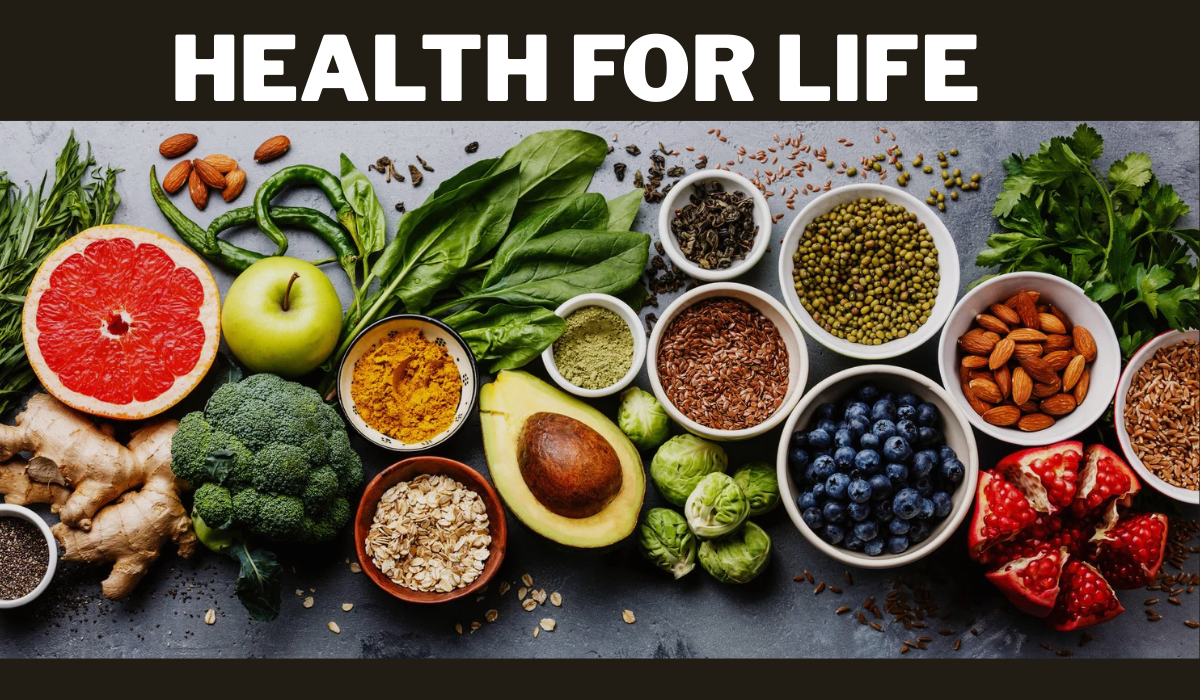We all want a life filled with energy, well‑being, and purpose. But in our busy world, making that a reality can feel like chasing a dream. That’s where “Health for Life” comes in—it’s more than a phrase. It’s a philosophy, a commitment, and a roadmap that celebrates long-term wellness, personal empowerment, and true balance.
In this article, let’s explore what Health for Life means—its roots in health promotion, inspiring real-life programs, and how you can shape it in your own life. Ready to embark on a journey toward better health, sustained? Let’s go!
What Does “Health for Life” Mean?
At its heart, “Health for Life” emphasizes the idea that health isn’t a moment but a journey. One way to understand this is through the WHO’s historic Ottawa Charter for Health Promotion, which defines health as “a resource for everyday life” rather than the goal of living. It outlines five strategic areas—building supportive policies, enabling environments, boosting personal skills, strengthening community actions, and re‑orienting healthcare toward prevention.
In simpler terms: we’re not just chasing the absence of illness—we’re nurturing well-being, resilience, connection, and thriving every day.
1. Health for Life in Action: Programs That Inspire
The phrase has come to life through powerful initiatives worldwide—here are two that stand out:
a. “My Health for Life” in Queensland, Australia
This is a free, government‑funded program designed to help people reduce risks for heart disease, type 2 diabetes, and stroke. It offers six structured coaching sessions over six months, led by health coaches and backed by a network of health organizations
Each session is tailored: from exploring your personal definition of health, to unpacking your motivation, building a plan (with a backup!), and celebrating milestones. There’s also culturally adapted support for diverse communities
b. USAID’s “Health for Life” Project in Nepal
On a national level, USAID’s Health for Life (H4L) project helped strengthen family planning, maternal, newborn, and child health services across Nepal. With nearly $28 million invested over five years, the project focused on governance, healthcare quality, data-driven policymaking, and empowering local health systems
Both programs demonstrate that Health for Life is adaptable—from individual behavior change to systemic healthcare transformation.
2. The Science Behind Health for Life: Prevention & Promotion
Why is focusing on healthy habits and prevention so critical to long-term health? Look at preventive healthcare:
-
Encouraging nutritious diets, physical activity, and lifelong learning improves quality of life and life expectancyWikipedia.
-
System-wide efforts like vaccinations, water hygiene, and environmental protections safeguard health before illness strikesWikipedia.
In short, investing in prevention—not waiting for crises—pays off in energy, resilience, and savings over time.
3. You and Your Health for Life: Building Real Habits That Last
Now, let’s make this personal. How can you bring “Health for Life” into your everyday world?
a. Set Your Personal Why
Start by asking: What does health mean to me? Whether it’s being present with loved ones or having energy to explore—with clarity, every step gets more meaningful.
b. Build Habit Bridges
Create habits that are tiny but meaningful. Substitute a sugary drink with sparkling water, add a 10‑minute walk, or jot down one gratitude note daily. Consistent baby steps lead to big shifts.
c. Anticipate & Arm for Setbacks
Life is unpredictable. Build in Plan Bs—have a shorter workout or a homemade mini-meal plan if you’re pressed for time. Resilience isn’t rigidity.
d. Lean on Your Support
This could be a health coach, supportive friend, or community group. Social accountability fuels motivation and makes the journey richer.
e. Measure Kind Progress
Track your own wins—whether consistent sleep, improved mood, or cooking more meals at home. Appreciation fuels momentum.
f. Nourish Self‑Compassion
Realize that slip-ups are just part of being human. One setback doesn’t erase your progress—so focus on starting again, not giving up.
4. Lifelong Health: Beyond Fitness and Food
“Health for Life” stretches into all facets of life:
-
Stress and Mental Health: Life includes challenges. Tools like mindfulness, breaks, or joyful hobbies are not luxuries—they’re essential for long-term health.
-
Sleep and Recovery: Deep rest fuels mood, immunity, and clarity. Tackle sleep debt like a priority, not negotiable.
-
Social Connection: Relationships are lifelines. Seek community—volunteer, join clubs, or just reach out.
-
Purpose and Growth: Whether through career or creative projects, having a sense of purpose sustains vitality across years.
Real‑World Story: “Food as Medicine”
One of the most compelling examples comes from the Fresh Food Farmacy in the U.S., where doctors prescribe nutritious groceries and classes instead of—or alongside—medications for people with diabetes. One participant lost 60 pounds and dramatically improved their blood sugar simply through access to healthy food and educationTIME.
This powerful story reminds us: when health systems turn toward prevention and context, people thrive. And health isn’t a pill—it’s lifestyle, support, and agency.
5. Your Action Blueprint: Living Health for Life
Here’s a step-by-step guide to kickstart your health-first life:
-
Define Your Vision — How do you envision feeling next year? What matters most?
-
Choose One Tiny Habit — Start with something doable, like adding one fruit or stretching in the morning.
-
Anchor It — Link your new habit to an existing routine—like brushing your teeth.
-
Prepare Your Back‑Up Plan — If life disrupts, have a simpler version ready.
-
Share Your Goal — Tell someone, or use an app to check in weekly.
-
Celebrate Small Wins — Every day you show up is progress.
-
Expand Mindfully — Once one habit stabilizes, layer another brick.
-
Reflect Regularly — Monthly check-ins help you course-correct and stay inspired.
In Summary
-
Health for Life isn’t a fad—it’s a lifestyle anchored in prevention, empowerment, and real change.
-
From personal coaching programs to international health initiatives, it spans both individual habits and system-level reforms.
-
The science is clear: well-being is built, not bought—through daily choices and environments that support us.
-
Your life can be one of vitality, clarity, and steady growth—with patience, planning, and kindness toward yourself.
Let Health for Life be your invitation to a brighter everyday—not perfect, but profoundly human, sustained, and meaningful.





